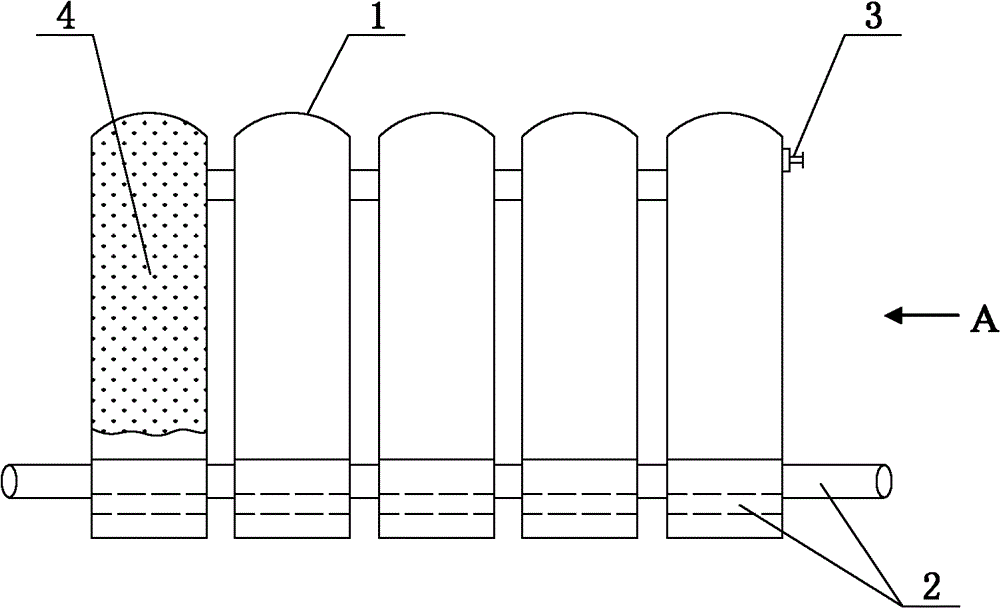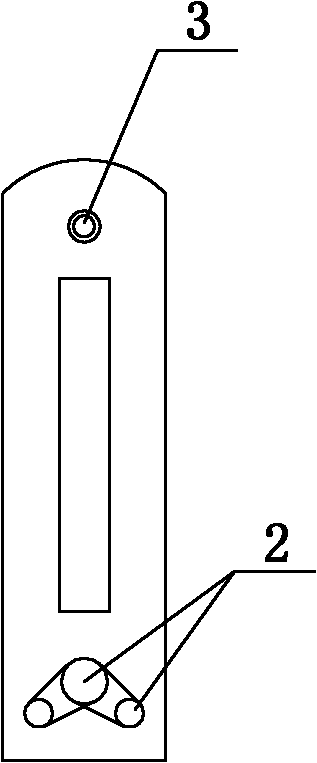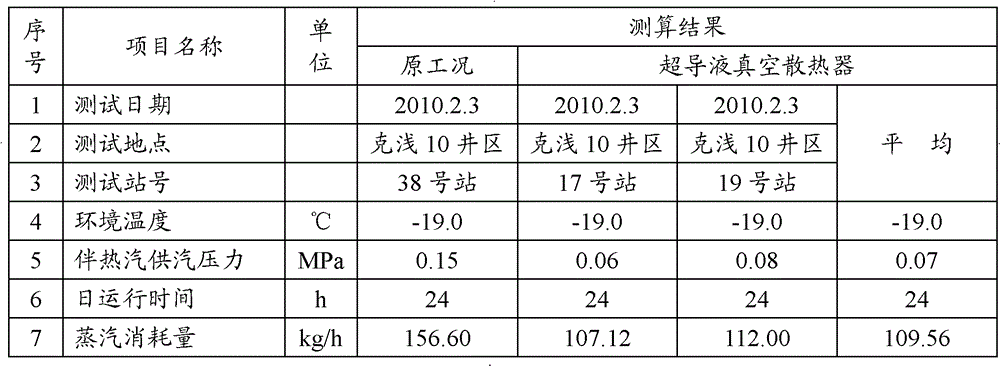A kind of superconducting fluid and vacuum radiator using the superconducting fluid
A heat sink and superconducting liquid technology, applied in the direction of indirect heat exchangers, heat exchange materials, chemical instruments and methods, etc., can solve problems such as unfavorable use in alpine regions, failure to meet heating requirements, and failure of superconducting liquid to rise. Achieve the effect of saving the amount of heat medium, good heat release effect and saving the number of columns
- Summary
- Abstract
- Description
- Claims
- Application Information
AI Technical Summary
Problems solved by technology
Method used
Image
Examples
preparation example Construction
[0027] The preparation process of the superconducting liquid is as follows: first mix 2.6%-3.2% potassium dichromate and 0.3%-0.5% calcium chloride and react for 5 minutes, then add 4.8%-7% absolute ethanol and react for 7 minutes, then add 0.5%-0.7% sodium perborate and 0.1%-0.3% boric acid reacted for 2 minutes, then added 0.04%-0.1% manganese dioxide, 0.08%-0.16% sodium peroxide, 0.06%-0.1% zinc hydroxide and reacted for 10 minutes , and finally, the remainder is supplemented by ionized water with a resistivity of 1.5MΩ·m or more, and the mixture is evenly stirred.
[0028] The superconducting liquid provided by the invention is inorganic, non-toxic to human body, non-combustible, non-freezing at -40°C, vaporized at 40°C, and non-corrosive to metals.
[0029] As shown in Table 1 and Table 2, compared with water, the thermal conductivity of the superconducting liquid provided by the present invention is significantly higher than that of water, and the specific heat capacity ...
Embodiment 1
[0035] Mix 2.7% potassium dichromate and 0.4% calcium chloride and react for 5 minutes, then add 7% absolute ethanol and react for 7 minutes, then add 0.5% sodium perborate and 0.12% boric acid for 2 minutes, then add 0.09% dichromate Manganese oxide, 0.1% sodium peroxide, and 0.08% zinc hydroxide were reacted for 10 minutes, and finally 89.01% of ionized water with a resistivity of 1.5MΩ·m or more was added.
Embodiment 2
[0037] Mix 2.6% potassium dichromate and 0.3% calcium chloride and react for 5 minutes, then add 5.9% absolute ethanol and react for 7 minutes, then add 0.6% sodium perborate and 0.1% boric acid for 2 minutes, then add 0.04% dichromate Manganese oxide, 0.08% sodium peroxide, and 0.06% zinc hydroxide were reacted for 10 minutes, and finally 90.32% ionized water with a resistivity of 1.5MΩ·m or more was added.
PUM
| Property | Measurement | Unit |
|---|---|---|
| height | aaaaa | aaaaa |
| electrical resistivity | aaaaa | aaaaa |
| height | aaaaa | aaaaa |
Abstract
Description
Claims
Application Information
 Login to View More
Login to View More - R&D
- Intellectual Property
- Life Sciences
- Materials
- Tech Scout
- Unparalleled Data Quality
- Higher Quality Content
- 60% Fewer Hallucinations
Browse by: Latest US Patents, China's latest patents, Technical Efficacy Thesaurus, Application Domain, Technology Topic, Popular Technical Reports.
© 2025 PatSnap. All rights reserved.Legal|Privacy policy|Modern Slavery Act Transparency Statement|Sitemap|About US| Contact US: help@patsnap.com



